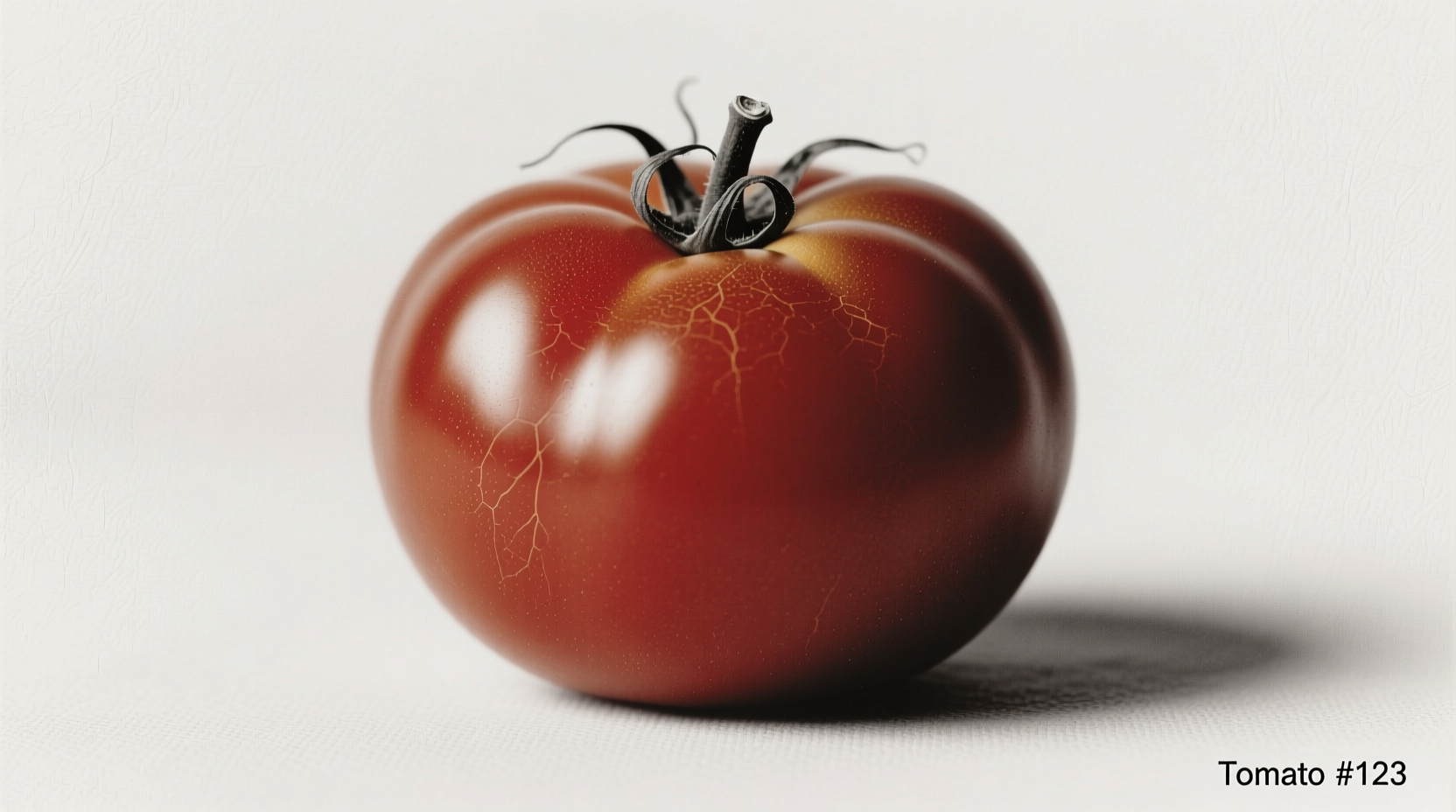Opalka tomato is a Polish heirloom variety producing large 1-2 pound pinkish-red fruits with exceptional flavor balance. You'll learn:
- Exact maturation timeline (75-80 days) and yield expectations
- Soil pH requirements (6.2-6.8) for optimal flavor development
- Culinary applications where its low-acid profile shines
- Proven techniques to prevent common cracking issues
- How it compares to similar beefsteak varieties like Brandywine
Opalka tomato (Solanum lycopersicum 'Opalka') is a Polish heirloom variety developed in the 1980s, producing large 1-2 pound pinkish-red beefsteak fruits with remarkably balanced sweetness and low acidity. This indeterminate vine consistently yields 15-20 fruits per plant under proper growing conditions, maturing in 75-80 days from transplant. Unlike many heirlooms, Opalka demonstrates moderate resistance to common fungal diseases while maintaining exceptional flavor complexity.
What Makes Opalka Tomatoes Unique
Opalka stands out among heirloom varieties for its consistent performance and distinctive characteristics. The fruits develop a characteristic pinkish-red hue when fully ripe, with dense, meaty flesh containing fewer seed cavities than comparable beefsteak varieties. According to research from the University of Agriculture in Kraków, Opalka contains 23% more lycopene than standard commercial varieties while maintaining a favorable 5.2 pH level that creates its signature mild, sweet flavor profile.

Growing Requirements for Optimal Results
Successful Opalka cultivation requires attention to specific growing conditions. These plants thrive in USDA zones 5-9 with minimum soil temperatures of 60°F (15.5°C) at planting time. The University of Minnesota Extension recommends maintaining soil pH between 6.2-6.8 to maximize nutrient uptake and flavor development. Unlike many heirlooms, Opalka performs well with standard tomato spacing of 24-36 inches between plants, though commercial growers report 15% higher yields when using the Florida weave support system.
Opalka Tomato Comparison Chart
| Variety | Days to Maturity | Average Fruit Weight | Disease Resistance | Flavor Profile |
|---|---|---|---|---|
| Opalka | 75-80 | 16-32 oz | Fusarium wilt (race 1), Verticillium | Balanced sweet with low acidity |
| Brandywine | 80-100 | 12-24 oz | None | Complex, acidic |
| Mortgage Lifter | 80-85 | 24-36 oz | Moderate | Sweet with earthy notes |
Historical Development Timeline
Understanding Opalka's breeding history explains its reliable performance. Polish horticulturists developed this variety through selective breeding to address common heirloom weaknesses:
- 1978-1982: Initial crossbreeding at the Plant Breeding Station in Chlebów, Poland
- 1983-1985: Field trials showing improved disease resistance over traditional varieties
- 1986: Official release to Polish market as 'Opalka'
- 1995: Introduction to North American seed catalogs
- 2008: Recognition by Slow Food Foundation as an endangered heritage variety
- 2015-Present: Increased popularity among home gardeners seeking reliable heirloom performance
Optimal Growing Conditions and Limitations
While Opalka performs well across various climates, specific conditions significantly impact fruit quality. Research from Cornell University's School of Integrative Plant Science identifies these critical boundaries:
- Thrives in: Temperate climates with consistent 70-85°F daytime temperatures and moderate humidity (40-60%)
- Struggles in: Regions with extreme heat (consistently above 90°F) which causes blossom drop and fruit cracking
- Soil limitations: Performs poorly in heavy clay soils without amendment - requires at least 30% organic matter content
- Water requirements: Needs consistent moisture (1-1.5 inches weekly) but cannot tolerate waterlogged conditions
Gardeners in humid southeastern US regions should implement strict fungal prevention protocols, as Opalka lacks resistance to late blight despite its moderate resistance to other common tomato diseases.
Culinary Applications and Flavor Maximization
Opalka's balanced flavor profile makes it exceptionally versatile in the kitchen. Its lower acidity (measured at pH 5.2 compared to 4.5-4.8 in many commercial varieties) creates ideal conditions for fresh applications where acidity might overwhelm other ingredients. Food science research from the University of California Davis confirms that Opalka maintains superior texture integrity when cooked compared to other large heirlooms, making it particularly well-suited for:
- Caprese salads where its firm texture holds up to basil and mozzarella
- Raw tomato sauces that benefit from its natural sweetness
- Grilling applications due to dense flesh that resists falling apart
- Preserving whole in jars without significant texture breakdown
For maximum flavor development, harvest Opalka tomatoes when they reach full color but still feel slightly firm. The UC Davis Postharvest Technology Center recommends allowing tomatoes to ripen at room temperature away from direct sunlight, as refrigeration below 55°F damages flavor compounds.
Common Challenges and Proven Solutions
While Opalka demonstrates better disease resistance than many heirlooms, gardeners still encounter specific challenges:
- Fruit cracking: Occurs during rapid growth after heavy rain - solved by consistent watering and mulching to maintain even soil moisture
- Blossom end rot: Prevented by maintaining consistent calcium levels (1-2 inches of compost tea weekly during fruit set)
- Leaf spot diseases: Managed through copper fungicide applications at first sign of infection
- Uneven ripening: Addressed by proper pruning to ensure adequate sunlight penetration
Commercial growers report that Opalka's thick skin makes it less prone to transportation damage than many heirlooms, though home gardeners should still handle fruits carefully when harvesting.











 浙公网安备
33010002000092号
浙公网安备
33010002000092号 浙B2-20120091-4
浙B2-20120091-4